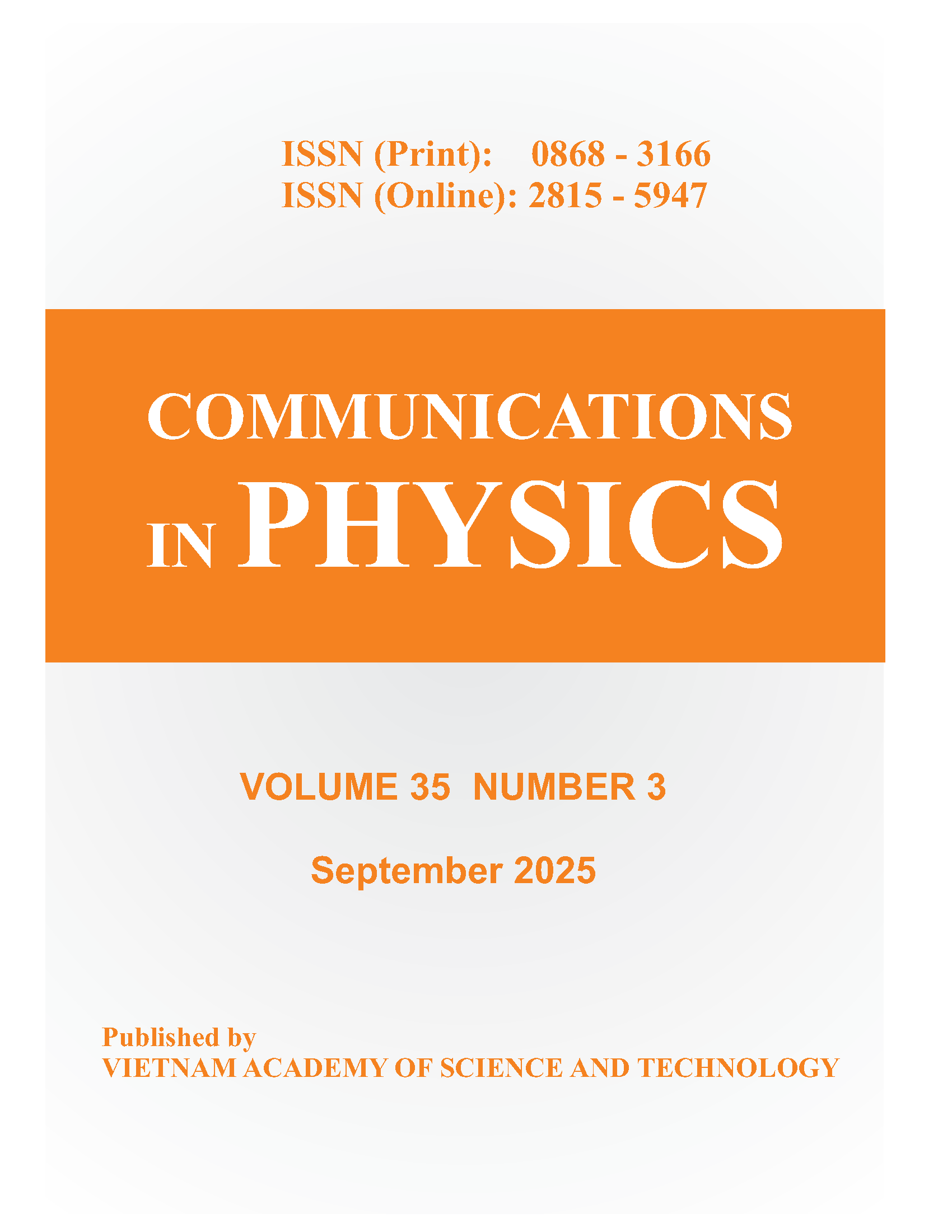Highly sensitive refractive index sensing based on nanostructured porous silicon interferometers
Author affiliations
DOI:
https://doi.org/10.15625/0868-3166/19163Keywords:
porous silicon, Chemical sensor, Metal ionsAbstract
In this study, we present the experimental evidence demonstrating the utility of electrical double layer (EDL)-induced ion accumulation, using sodium (Na+) ion in water as model substances, on a negatively charged nanostructured surface, specifically thermally grown silicon dioxide (SiO2). This novel approach, termed Ion Surface Accumulation (ISA), aims to enhance the performance of nanostructured porous silicon (PSi) interferometers in optical refractometric applications. The experimental results show that the electrical double layer-induced ion surface accumulation (EDL-ISA) on oxidized PSi interferometers enables remarkable amplification of the interferometer output signal (the spectral interferogram), even when the bulk refractive index variation is below 10-3 RIU. This substantial signal enhancement translates into an increase in sensitivity of up to two orders of magnitude, facilitating the reliable measurement of refractive index variations with both a detection limit (DL) and resolution (R) as low as 10-4 RIU. This achievement elevates the performance of PSi interferometers in photonics and plasmonics-based refractive index platforms.
Downloads
References
N. H. Maniya and D. N. Srivastava, Fabrication of porous silicon based label-free optical biosensor for heat shock protein 70 detection, Mater. Sci. Semicond. Process., 115 (2020) 105126.
Z. A. Zaky, A. M. Ahmed, A. S. Shalaby, and A. H. Aly, Refractive index gas sensor based on the Tamm state in a one-dimensional photonic crystal: Theoretical optimisation, Sci. Rep., 10 (2020) 9736.
Z. A. Zaky, S. Alamri, V. D. Zhaketov, and A. H. Aly, Refractive index sensor with magnified resonant signal, Sci. Rep., 12 (2022) 13777.
V. H. Pham, H. Bui, T. Van Nguyen, T. A. Nguyen, T. S. Pham, V. D. Pham, T. C. Tran, T. T. Hoang, and Q. M. Ngo, Progress in the research and development of photonic structure devices, Adv. Nat. Sci. Nanosci. Nanotechnol., 7 (2016) 015003.
H. Bui, V. H. Pham, V. D. Pham, T. H. C. Hoang, T. B. Pham, T. C. Do, Q. M. Ngo, and T. Van Nguyen, Determination of low solvent concentration by nano-porous silicon photonic sensors using volatile organic compound method, Environ. Technol., 40 (2019) 3403.
V. H. Pham, T. Van Nguyen, T. A. Nguyen, V. D. Pham, and H. Bui, Nano porous silicon microcavity sensor for determination organic solvents and pesticide in water, Adv. Nat. Sci. Nanosci. Nanotechnol., 5 (2014) 045003.
F. A. Harraz, Porous silicon chemical sensors and biosensors: A review, Sensors Actuators B Chem., 202 (2014) 897.
W. D. Sacher, Y. Lin, H. Chen, S. S. Azadeh, Z. Yong, X. Luo, H. Chua, J. C. C. Mak, A. Govdeli, A. Sharma, J. C. Mikkelsen, X. Mu, A. Stalmashonak, G.-Q. Lo, and J. K. S. Poon, An Active Visible-Light Integrated Photonics Platform on 200-mm Si, in OFC, 2023, DOI: 10.1364/OFC.2023.Tu3C.5.
C. Pacholski, M. Sartor, M. J. Sailor, F. Cunin, and G. M. Miskelly, Biosensing Using Porous Silicon Double-Layer Interferometers: Reflective Interferometric Fourier Transform Spectroscopy, J. Am. Chem. Soc., 127 (2005) 11636.
R. F. Balderas-Valadez, R. Schürmann, and C. Pacholski, One Spot—Two Sensors: Porous Silicon Interferometers in Combination With Gold Nanostructures Showing Localized Surface Plasmon Resonance, Frontiers in Chemistry, 7 (2019) 593.
M. P. Stewart, J. M. Buriak, Chemical and Biological Applications of Porous Silicon Technology, Adv. Mater., 12 (2000) 859.
C. Peng, C. Yang, H. Zhao, L. Liang, C. Zheng, C. Chen, L. Qin, H. Tang, Optical Waveguide Refractive Index Sensor for Biochemical Sensing, Appl. Sci. 13 (2023) 3829.
Z. Tu, D. Gao, M. Zhang, and D. Zhang, High-sensitivity complex refractive index sensing based on Fano resonance in the subwavelength grating waveguide micro-ring resonator, Opt. Express, 25 (2017) 20911.
M. J. Sailor, Chemistry of Porous Silicon, In Porous Silicon in Practice:Preparation, Characterization and Applications, Wiley‐VCH Verlag GmbH & Co. KGaA, (2011) 189.
S. Mariani, L. M. Strambini, and G. Barillaro, Femtomole Detection of Proteins Using a Label-Free Nanostructured Porous Silicon Interferometer for Perspective Ultrasensitive Biosensing, Anal. Chem., 88 (2016) 8502.
J. Chapron, S. A. Alekseev, V. Lysenko, V.N. Zaitsev, D. Barbier, Analysis of interaction between chemical agents and porous Si nanostructures using optical sensing properties of infra-red Rugate filters, Sensors Actuators B Chem., 120 (2007) 706.
W. Heller, Remarks on Refractive Index Mixture Rules, J. Phys. Chem. 69 (1965) 1123.
Downloads
Published
How to Cite
Issue
Section
License
Communications in Physics is licensed under a Creative Commons Attribution-ShareAlike 4.0 International License.
Copyright on any research article published in Communications in Physics is retained by the respective author(s), without restrictions. Authors grant VAST Journals System (VJS) a license to publish the article and identify itself as the original publisher. Upon author(s) by giving permission to Communications in Physics either via Communications in Physics portal or other channel to publish their research work in Communications in Physics agrees to all the terms and conditions of https://creativecommons.org/licenses/by-sa/4.0/ License and terms & condition set by VJS.












